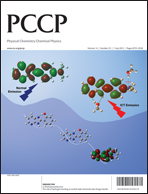Host–guest inclusion complexes represent an important type of supramolecular structure, one which finds widespread applications in diverse areas including separations science, the food industry, molecular sensors and optical devices. There are several driving forces for the formation of such inclusion complexes in solution; one of the most important is hydrogen bonding between the guest and host molecules. The nature or strength of the hydrogen bonding may change upon electronic excitation of the guest, for example during fluorescence studies or when the inclusion complex is used as an optical sensor. In this Perspective article, the impact of hydrogen bonding between excited state guests and their hosts is examined in detail, in terms of the impact on the formation and stability of such excited state complexes, the effects on guest fluorescence, changes in the stability of ground state guest complexes upon electronic excitation, the application of inclusion complexes as fluorescent sensors and materials, and the use of fluorescence spectroscopy for their study.

You have access to this article
 Please wait while we load your content...
Something went wrong. Try again?
Please wait while we load your content...
Something went wrong. Try again?


 Please wait while we load your content...
Please wait while we load your content...